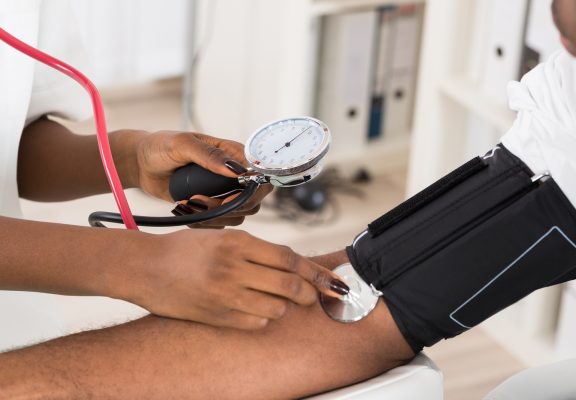


Cabo Verde
Cape Verde, or Cabo Verde, is a nation on a volcanic archipelago off the northwest coast of Africa. It has a population of 498,895 people (2013). Its GPD per capita is USD 3,767 and GDP of USD 1.879 billion.
AHO PRIORITIES FOR HEALTH DELIVERY PLAN IN CABO VERDE
Communicable diseases:
-
- HIV/AIDS and STIs
- Malaria
- Environmental issues, including food safety.
- Strengthening and restructuring of the public health.
- Child health:
- Breastfeeding
- Immunisation
- Early child development
- Lifestyle-related diseases:
- Obesity
- Diabetes mellitus
- Cerebrovascular and cardiovascular diseases
- Mental disorders
PROGRAMMES & PROJECTS
1. MANAGEMENT OF AHO
PURPOSE
To establish an effective and efficient managerial and administrative structure to support the delivery of technical cooperation
EXPECTED RESULTS
- Managerial capabilities of the organisation strengthened.
- Public awareness programs conducted to promote AHO values and disseminate information.
- Resources mobilised for TCC the programmes and extra-budgetary funds.
2. PROMOTION OF SAFE PHYSICAL ENVIRONMENTS AND DISASTER PREPAREDNESS
PURPOSE
To improve living, working, and recreational environments and to reduce vulnerability to disaster
EXPECTED RESULTS
- Capacity increased to integrate environmental health into development processes.
- Capacity strengthened to manage water and sanitation services.
- Capacity strengthened to manage solid waste and control pollution.
- Capacity strengthened to manage hazardous materials.
- Capacity strengthened to manage occupational health and safety.
- Capacity strengthened to mitigate, prepare for, and respond to disasters.
3. COMMUNICABLE AND NONCOMMUNICABLE DISEASES
PURPOSE
To reduce the risks and burden of communicable and noncommunicable diseases, including mental health problems and substance dependency
EXPECTED RESULTS
- National capacity strengthened to control malaria.
- Programmes strengthened to control emerging and re-emerging diseases.
- Programs strengthened to eliminate communicable diseases.
- Animal health and zoonosis program strengthened.
- Programs strengthened to control cardiovascular diseases and risk factors.
- Program strengthened to reduce the disease burden of mental health problems.
- Programs strengthened to control cancer.
- STD program, including HIV/AIDS, strengthened.
4. PROGRAMME ON IMMUNISATION (POI)
PURPOSE
To assist in improving implementation of the POI nationwide
EXPECTED RESULTS
- Adequate supplies of vaccines available for uninterrupted activities.
- Secured cold chain for optimized storage and administration of vaccines.
- Increased awareness and active participation of population in vaccination activities.
- Support provided to improve the surveillance of POI diseases.
- Support provided to improve trans-border and international collaboration.
5. PROMOTION OF HEALTHY LIFESTYLES AND SOCIAL ENVIRONMENTS
PURPOSE
To promote a work environment that is free of smoking and alcohol and substance abuse.
EXPECTED RESULTS
- Smoke-free spaces created and support provided to policies and incentives to reduce the consumption of alcohol and illegal drugs.
- Incentives developed to reduce alcohol and substance use.
- Increased availability of life skills education programs in secondary schools.
- Surveillance increased to identify trends in behaviour and social conditions that influence healthy lifestyles.
- Dental care and hygiene improved among schoolchildren.
6. HEALTHY GROWTH AND DEVELOPMENT
PURPOSE
To strengthen the national capacity to reduce health risks, morbidity, and mortality and to promote healthy growth and development for all age categories, with a special focus on children, mothers, and adolescents.
EXPECTED RESULTS
- Capacity strengthened to develop and implement plans, policies, and projects to improve child and adolescent health.
- Capacity strengthened to develop and implement plans, policies, and projects to improve the health status of women and men in the reproductive stage of the life cycle.
- Capacity strengthened to develop and initiate comprehensive programs to promote and protect the health and well-being of the elderly.
- Capacity strengthened to develop and implement plans, policies, and projects to improve the nutritional status of selected population groups and to identify, prevent, monitor, and reduce malnutrition and diet-related problems.
7. HEALTH SYSTEMS AND SERVICES DEVELOPMENT
PURPOSE
To strengthen the capacity of the national health system to guarantee quality health care to the entire population and to respond adequately to changes in internal and external conditions.
EXPECTED RESULTS
- National health sector reform process strengthened, based on the guiding principles of equity, effectiveness, quality, efficiency, sustainability, and social participation.
- Capacity building to improve the quality and performance of the health system and services.
- National Health Information System developed and related health information systems strengthened.
- The development of adequate surveillance systems strengthened to monitor epidemiological conditions.
RESOURCES (USD)
AHO CAPE VERDE BUDGET 2020 (USD million) based on 2017 pop. 546,388 World Bank*
| SO | BUDGET ITEM | AMOUNT* |
| 1 | Combating communicable diseases |
10 |
| 2 | Tackling non communicable diseases |
15 |
| 3 | Addressing determinants of health & risk factors |
10 |
| 4 | Modernising health system and health service |
8 |
| 5 | Improving preparedness, surveillance and response |
7 |
| 6 | Developing good governance & corporate services |
5 |
| Total |
55 |
AHO estimates that it needs to spend at least USD100 per capita on health to meet the basic health needs of the people in Africa. This is too far below developed countries e.g. in England it is US$1,300 per capita (2017)

